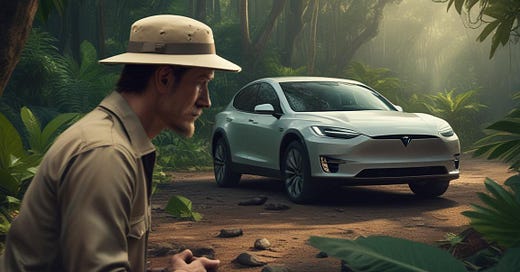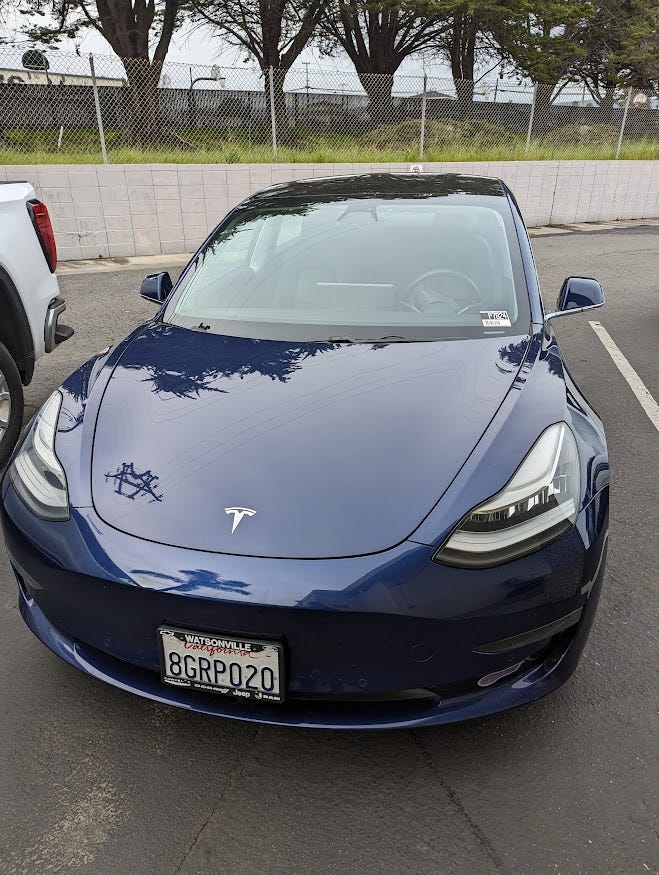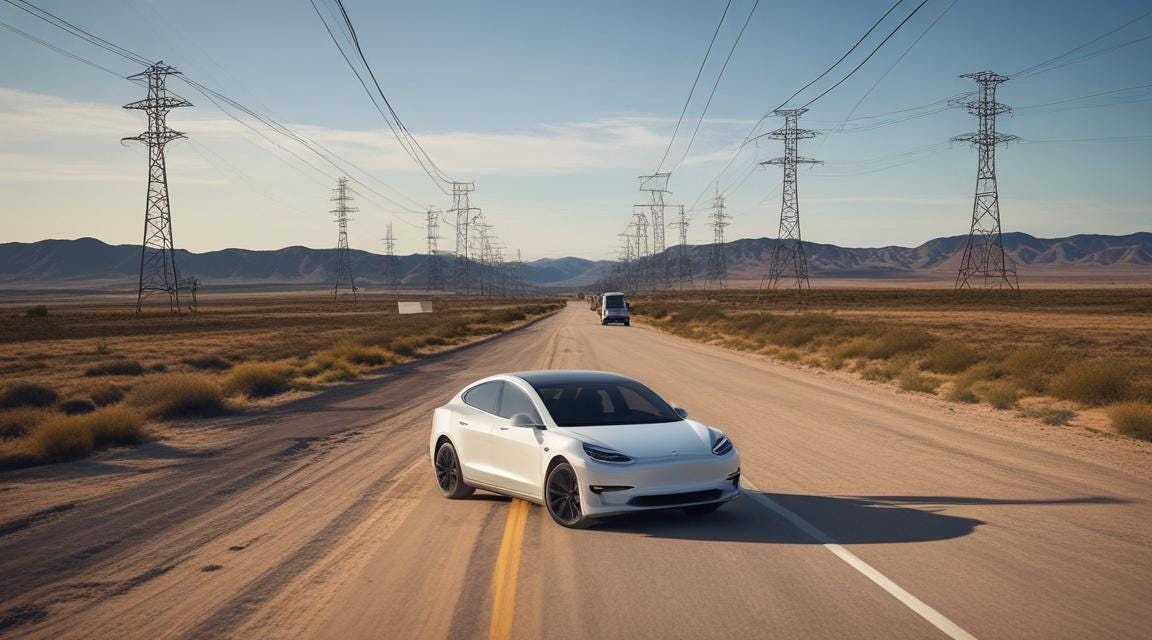The Pope Made Me Do It
I have spent the better part of 2 years working with the Romero Institute’s Let’s Green CA Project. I have worked on outreach to the Spanish-speaking in conjunction with the Catholic Diocese of Monterey. Our focus has been home and auto electrification.
We initially worked with parishes on understanding Pope Francis’ encyclical letter Laudato Si: Care for our Common Home (2015). In a more recent document, “Laudate Deum” (2023), the Pope laments the lack of progress by the world community to improve the environment and reduce global warming. Pope Francis was not too subtle about laying the blame at the feet of the fossil fuel industry.
Excerpts from “Laudate Deum”: The Pope’s Cry for a Response to the Climate Crisis - Vatican News, October 2023
The Holy Father observes that “the necessary transition towards clean energy sources such as wind and solar energy, and the abandonment of fossil fuels, is not progressing at the necessary speed. Consequently, whatever is being done risks being seen only as a ploy to distract attention” (55). ….
On the subject of protests by groups “negatively portrayed as radicalized”, Pope Francis affirms that “in reality they are filling a space left empty by society as a whole, which ought to exercise a healthy “pressure”, since every family ought to realize that the future of their children is at stake” (58). …
The Holy Father ends his Exhortation with a reminder that “emissions per individual in the United States are about two times greater than those of individuals living in China, and about seven times greater than the average of the poorest countries.”
Time to Practice What I Preach
We left behind our gas stove for an induction stove. We changed out the cookware and were delighted to see that our air filter no longer flashed a bright orange when we were cooking. For many lower-income people, gas stoves are also used for heat and the houses are kept closed. This leads to higher rates of respiratory conditions such as asthma and COPD, including emphysema. As someone with a history of asthma, I did have the luxury of good ventilation. Nevertheless, the change was notable. While people may focus on climate change, indoor and outdoor air pollution is an easier sale for the public and climate skeptics.
According to the EPA (2023), the average passenger car gets 22.2 miles per gallon, generating 4.6 metric tons of CO2 per year. According to Green Peace, the economic impact of air pollution in China is $900 billion per year and $600 billion in the United State.
Electric cars put me on a steep learning curve. Until this year, incentives to purchase EV’s were limited to tax credits. For most middle and lower income people this was not feasible since they don’t pay a lot in taxes, if any.
President Biden’s Inflation Reduction Act (2023) provides cash incentives of $7,500 up front for a new EV or plug-in hybrid. The administration’s goal is for EVs to make up 50% of all cars on the road by 2030. New and used EVs selling for less than $25,000 can also qualify for $4,000 at the time of purchase. Local utilities may also provide cash payments of $2,000 to $4,000, depending on your income. Our regional purchaser of renewable energy, Central Coast Community Energy provides an additional $1,000 to $2,000.
Searching for the Promised Car
So, I decided to take the plunge with the guidance of a volunteer counselor at Ecology Action in Santa Cruz. Micheal Saint is a retired engineer who helps people understand and purchase EVs. (Yes, his name is spelled Micheal.) Basically, you tell him what you want and can afford, and he does the leg work. It’s like having your own personal shopper. Micheal does the work of scanning listings as well as making recommendations for free.
My 2016 Tesla Model 3 has 43,000 miles. It was owned by a corporation but had had only one driver. I liked it. The price was right and I thought that it would be a good starter EV. It is my first blue car and looks snazzy, or at least, I think it does.
As a fan of doing things backwards, I didn’t really know much about the care and feeding of an EV. I had test driven a Chevy Bolt which I liked, but I needed a larger platform for passengers and trips. My 15 year old grandson is a cellist and he is also getting into his electric guitar phase. I needed room for musical instruments and amplifiers. This made the roomier Tesla 3 more appealing.
The solidity, fit, and finish of the car is really remarkable. In my decidedly non-professional judgment, it is a remarkable pieces of engineering. Getting used to it can be disconcerting. I was getting ready to parallel park when I got a message from the all knowing tablet, “Auto Park Available”. I pushed the indicator and took my hands off of the wheel. The wheel began spinning. The car began moving and we easily entered the space. The car then adjusted itself to the proper spacing between the cars. Yes, other cars do this, but it was impressive. It left me wondering about the self driving taxis Musk is putting on the streets of San Francisco.
How far can you go? Range is one of the biggest concerns people have about EVs. Generally, I can get about 225 miles on an 80% charge and about 282 miles on a full charge. This is the nominal capacity. Your results will vary. You have to allow for not going below 20% or 10%. A lot depends on how fast you are travelling and whether you are using the air conditioner. Other factors such as wind, how much you are climbing, and your load use up more energy. The proper inflation of your tires and there condition are other considerations. It takes me about a week to go from 80% to 20% driving around town. On a recent trip to southern California I got about 260 miles on a 100% charge to a 10% charge. However, you do need to plan ahead. The navigation system can figure this out for you. I usually make one stop on this trip and when I stopped I topped off the battery.
Are EVs Eco-friendly?
While EVs “spare the air” and the maintenance is minimal, their manufacture and the massive battery have a definite environmental impact. Manufacturing the lithium ion battery uses large amounts of water, energy, and hard-to-find rare earth elements. The mining involved creates significant harm. However, the current consensus is that EVs make their impact earlier and reduce their carbon footprint over time. Internal combustion engines have a lower impact when they are manufactured but have a larger carbon footprint over time.
Thea Riofrancos is a political scientist who has sounded the alarm about these impacts.
"A traditional car needs mining every day, needs mining every time it's used. It needs the whole extraction complex of fossil fuels in order to power it," she said.
The carbon pollution from burning gasoline and diesel in vehicles is the top contributor to climate change in the U.S. And there are other costs: Oil spills; funding for corrupt oil-rich regimes; the illnesses and preventable deaths caused by pollution from fossil fuels.
Add it up, she says, and if you're concerned about all the harms from mining, you'll still want to choose an EV over a comparable gas car.
Tesla has begun using the newer lithium ferrophosphate (LFP) batteries in the last two years. They do not require nickel and cobalt, which makes them less expensive and avoids a lot of the mining impact on the environment and the communities near mines. The downside is they they are 30% less energy dense. Consequently, you need a 30% bigger battery to have the same amount of energy. (It may be possible over time to replace lithium with sodium.) However you can charge an LFP battery to a 100% as opposed to the current 80% that Tesla recommends for its older lithium ion battery’s efficiency and longevity.
Toyota has announced plans for a solid state battery that charges to 100% in 10 minutes and has a range of 750 miles with reduced impact on the environment. However, it is not likely to be manufactured any time soon, Nevertheless, it does indicate the possible advances in battery technology in the not too distant future.
Will EVs Melt the Grid?
One of the big concerns has been the potential effect of EVs on the electric grid. Here are two interesting excerpts from “Why Electric Vehicles Won’t Break the Grid” (Scientific American September 29, 2022).
Fox News host Tucker Carlson called electric vehicles a “new way to overburden California’s already collapsing energy grid.” Rep. Steve Scalise (R-La.), a member of the House Committee on Energy and Commerce, slammed California’s endorsement of EVs amid energy shortfalls, saying in a tweet that it’s an example of “Democrat control” and “a joke.”
(Note: California does not have its own grid. The country has 3. One for the east, the west, and Texas. All the components are cobbled together but improvements are on the way with the Inflation Reduction Act.)
Lindsay Buckley a spokesperson for the California Energy Commission said:
In California—the national leader in electric cars with more than 1 million plug-in vehicles—EV charging currently accounts for less than 1 percent of the grid’s total load during peak hours. In 2030, when the number of EVs in California is expected to surpass 5 million, charging is projected to account for less than 5 percent of that load, said Buckley, who described it as a “small amount” of added demand.
Some EV proponents have said that installing roof top solar provides an offset in terms of generating more power. However, there are technical issues about peak generation times and loads and the need to move power around the grid. Nevertheless, there is something to be said about seeing an EV plugged into a house with a solar panels.
Matter Over Mind
As a philosophy major, I am used to complex discussions of arcane topics like how many kilowatts can dance on the head of an electron. Some owners say to charge it everyday. Musk has been quoted as saying that the cars are supposed to be plugged in if they are not being used. There are questions about the wisdom of using superchargers for regular driving or only to use them for longer road trips. Should you exceed an 80% charge and avoid anything less than a 20% charge?
How do you send it through a car wash? The owner’s manual - yes, it’s not paper - has clearly complicated instructions, which reminded me of reading Plotinus. (He’s a Neo-Platonist but that’s a story for another time.) I solved the riddle by handing the car wash attendant my valet card. Yes, there is no digital fob for the Model 3. The “valet card” is a credit card sized card that you can place on the console between the seats that let’s you start it without using the app on your phone. He expertly put it into car wash mode. Yes, that’s a thing. I asked a fellow “Teslalonian” about drive through car washes at the local kilowatt watering hole. He said, ”I used to baby it and fret, but now I just treat it like a regular car and drive it through the car wash.” (Teslalonian is my own creation - I think. However it does have a certain New Testament ring to it. Maybe we could get St. Paul to do a re-write.)
So far, it’s a lot of fun. I wish that I could say that I am just doing this for the environment or that the Pope told me to do it or at least implied that I should do it, but the acceleration, handling, and sureness of the road take the sacrifice out of environmentalism. Where’s the smug righteousness in that?
Please tell me about your experience with EVs or your questions.







